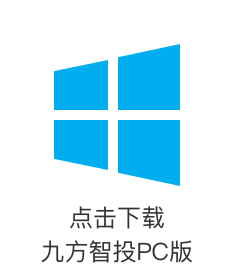1H22 results in line with our forecast
Shanghai Tianyang Hot Melt Adhesives (Shanghai Tianyang) announced its 1H22 results: Revenue grew 51.3% YoY to Rmb676mn, and recurring attributable net profit rose 50.1% YoY to Rmb22mn, in line with our forecast.
Revenue grew 41.8% and 60.8% YoY in 1Q22 and 2Q22, and recurring attributable net profit reached Rmb22.63mn in 2Q22, turning profitable YoY.
Trends to watch
PV adhesive film business growing rapidly; steady growth of traditional businesses amid COVID-19 resurgence.
PV adhesive film: Revenue from the photovoltaic (PV) adhesive film business surged 250.7% YoY in 1H22, and rose 376.1% YoY or 52.9% QoQ in 2Q22, recording impressive growth. We think despite the COVID-19 resurgence in Shanghai and other regions in 1H22, the firm succeeded in improving its market share among existing clients and adding new production capacity on the back of its high-quality products, capacity expansion plans, and an efficient and stable manufacturing system. Also, it took active measures to secure the five largest clients in the industry, fostering the sustained robust growth of its PV adhesive film business.
Wall cloth business: Shanghai Tianyang’s proprietary brand “Tianyang Wall Cloth” enjoys strong product competitiveness. In 1H22, the company continued to promote the development of new retail and all distribution channels to enhance brand power. It had 65 new franchisees in 1H22, showing growth despite a 20-30% decline in the industry amid COVID-19.
Hot-melt adhesive and electronic adhesive: Regarding its hot-melt adhesive business, the firm has maintained long-standing collaboration with global top-tier suppliers for garment lining, with the cooperation likely to remain stable. For its electronic adhesive business, Shanghai Tianyang strengthened R&D investment and expanded the application scenarios to new sectors such as intelligent wearables and automotive electronics, with its revenue from this business up by 5.9% YoY in 2Q22 despite COVID-19 resurgence.
Profitability improved notably; efforts to cut costs and optimize efficiency paid off. In 2Q22, gross margin (GM) rose 5.2ppt QoQ to 21.7%. Amid sharp increases in the costs of ethylene vinyl acetate (EVA) particles, a raw material, the firm raised the delivery prices of PV film in 2Q22, and the GM of PV film grew 16.9ppt QoQ to 21.5%, thus boosting marginal improvement in overall GM. In 2Q22, the firm’s selling, G&A and R&D, and financial expense ratios fell 5.4ppt, 5ppt, and 0.4ppt YoY to 3.4%, 7.2%, and 2.2%. Shanghai Tianyang effectively improved management efficiency and optimized spending on sales, with economies of scale diluting the expense ratios as well. Overall, recurring net margin reached 6.3% in 2Q22.
Upbeat on hot-melt adhesive leader, and rise of fast-growth PV adhesive film and wall cloth businesses. Reiterate Shanghai Tianyang as our top pick. In our view, the firm boasts high-caliber PV adhesive film products, which have been widely recognized by downstream clients like Chint Electrics and Risen Energy. Also, Shanghai Tianyang has been actively expanding capacity. The company predicts that its annual capacity for PV adhesive film is likely to reach 160mn sqm by the end of this year, and 510mn sqm by 2024. With the prices of silicon materials falling and demand growing in the future, we expect the firm to continue to acquire quality new clients and expand its market share among existing clients, and it is likely to record high-quality growth faster than its peers. In addition, the firm may continue to enhance channel building and optimize marketing efforts for its wall cloth business. We foresee the rise of the Tianyang brand amid the trend of continuously improving penetration rate of wall cloth and greater market concentration toward leading companies.
Financials and valuation
We keep our 2022 and 2023 earnings forecasts unchanged. The stock is trading at 44x 2022e and 19x 2023e P/E. We maintain an OUTPERFORM rating and our TP of Rmb18, implying 25x 2023e P/E with 29% upside.
Risks
Negative surprises in end-market demand; lower-than-expected new capacity; raw material price volatility; cash flow risk.












